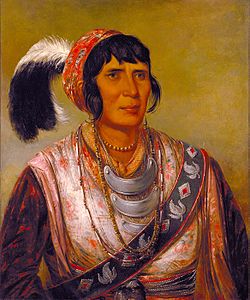A while ago, I quipped that living in Florida is rather like living in a foreign country. Several Americans responded by saying that they feel the same way. And then on my blog, someone pointed that Florida isn't really the South.
Y'know, it really isn't.
OK, here goes. History lesson.
Two hundred years ago, shortly after the United States became independent, the Southern States had a vibrant civilisation, It had cities, arts, culture, and was drawing on influences from France, Spain, Holland and Britain. It had industry, large-scale agriculture, and it had political organisation. Florida, by contrast, despite having the first proper European settlements on the continent, had nothing. It was, to all intents and purposes, empty. There were some scattered Indian tribes - not the Seminoles, they hadn't arrived yet - a few small coastal towns like St Augustine and Tampa, one or two missionary settlements, and that's about it.

In about 1845, the US decided to do something with the newly created state of Florida, and sent troops in to clear out the Seminoles. They weren't native to Florida, they'd been pushed out of places further north and fled to the swamps in the peninsula. The Seminole Wars were pretty much contemporaneous with the expansions in the West. Effectively, Florida was frontier territory just as much as the Great Plains. The first real settlers didn't turn up until the 1860s, just before the Civil War.
The history of the Civil War in Florida is brief. Apart from a few small skirmishes, nothing happened. Some bits of Florida even stayed loyal to the Union, or were held by Union troops throughout the war. Its sole strategic interest was as a supplier of beef, and Florida's ports controlled shipping going from the Atlantic to the Gulf of Mexico. Frankly, nobody cared much about Florida. Florida wasn't really a significant part of the Confederacy. It just happened to be south of Georgia and therefore in the South.
In the 1880s, the West was fully opened up. Florida was still all but empty. Orlando was a tiny outpost where you could get hunting supplies. Miami was a farm. The total population of Florida was tiny, something under 50,000 people. Then the multi-millionaire mogul Flagler had this great idea of turning Florida into a place to go on holiday. He built railroads, he built hotels, and he invited his friends. Hell, he built cities. Orange farmers flooded into the region, and towns started booming. Miami came into existence in the late 1890s after a huge freeze in Central Florida which killed off the citrus trees. A farmer sent Flagler an orange from Miami. Realising that the isolated Southern Florida was the only place in the US that could still supply New Yorkers with their daily orange juice, Flagler built a railroad down to Miami and started shipping oranges north as fast as he could.

Since then, Florida has been dominated by tourism and leisure. Palm Beach became the place to go in the 1920s and 1930s, and in the 1960s, Disney moved in, and everything took off. It's still, despite the recession, the world's leading tourist destination.
As a result, Florida is completely unlike anywhere else. Of the 20 million people who live here now, fewer than 3 million were actually born here. Nearly half of them have arrived in the last ten years. Half of the incomers are foreign immigrants like me, mostly Puerto Rican and Cuban; the rest have migrated from other states as the tourism boom has spurred a need for all sorts of workers, or have retired here to spend their old age in the sun.
As a result, Florida's culture is completely modern. It's nothing like the old world genteel charm or even the backwoods redneck of the real South. Florida's a strange little sticky out bit on one corner of the US where people from all over the world go to have fun in the sun and launch rockets.



No comments:
Post a Comment